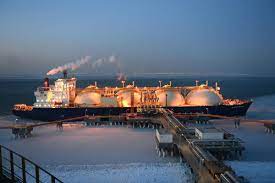Natural gas storage facilities in the European Union region were stocked to over 58 percent of capacity as of March 31, when the winter heating season ended, EU Energy Commissioner Kadri Simson has said.
“This is the highest level on record at this time of year”, Kadri said in a recent statement by the European Commission.
“These high storage levels are a result of our successful diversification of energy supplies, the efforts of citizens and businesses to reduce gas demand, and our investments in renewable energy – the three pillars of our REPowerEU Plan”.
REPowerEU was launched May 18, 2022, outlining strategies toward independence from Russian fossil fuels, in the aftermath of Russia’s invasion of Ukraine February 2022.
The Commission noted in the statement that the share of Russia in Europe’s gas imports fell from 45 percent in 2021 to 24 percent in 2022 and 15 percent in 2023.
Additionally, “Europeans have reduced their gas demand by almost 20 percent, which has allowed us to save more than 107 bcm [billion cubic meters] of gas in the last 18 months”, said the Commission.
Meanwhile renewables replaced the equivalent of 24 Bcm (847.6 billion cubic feet) of Russian gas in Europe’s energy mix in 2022 and 2023, the Commission added.
Outside the EU region, the 27-member bloc has also stored two Bcm (70.6 Bcf) of gas in Ukraine, the Commission said.
“This high level of gas storage puts the EU well on track to meet the 90 percent target on 1st of November 2024, and to enter winter 2024/2025 well prepared”, it added. “This will also ease the pressure on gas prices during the storage filling season”.
On June 19, 2022, the EU passed a regulation mandating the region’s gas storage facilities be filled to at least 90 percent of capacity by the start of November each year. This was in response to surges in energy prices that followed Russia’s invasion of Ukraine. For the past winter, the minimum was achieved some two months ahead of the deadline, according to a press release by the Commission August 18, 2023.
On November 20, 2023, the EU passed a regulation setting intermediary minimum filling levels for member states’ underground gas storage facilities in 2024 toward the annual regional target of at least 90 percent by November.
According to the regulation, by February 1 stockpiles in the 27 countries should sum up to a union minimum average of 45 percent of capacity. The same level has been set for May 1.
“The intermediate targets of 1 February and 1 May 2024 are important targets for the security of supply during the coming gas year”, stated the official text of the regulation.
“Setting the February target to a Union minimum average of 45 percent aims to reinforce security of gas supply by ensuring high deliverability from the storages in December 2023 and January 2024 when gas demand is high, while avoiding storage depletion in February and March 2024”, the regulation explained. “In particular, flexibility should be provided in the early winter months in case of a winter that is colder than the average”.
The regulation added, “The intermediary target of 45 percent EU storage level on 1 May 2024 is justified to facilitate storage refilling in the event of higher demand and/or reduced supply during summer 2024 and if not reached could pose a serious risk of not meeting the 90 percent storage target of 1 November 2024”.
In the recent statement about EU gas storage levels, the Commission said, “The high level of gas storage in Europe means that markets are increasingly stable, prices are back around pre-war levels, and Europe can start refilling with confidence for next winter’s heating season”.

 Iran Energy News Oil, Gas, Petrochemical and Energy Field Specialized Channel
Iran Energy News Oil, Gas, Petrochemical and Energy Field Specialized Channel



